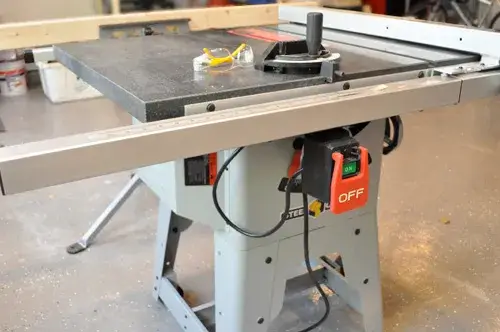A cabinet saw is a type of table saw that has a large, enclosed base that supports the motor, the blade, and the table. Cabinet saws are often considered the best table saws for professional woodworkers, as they offer high performance, accuracy, and durability. However, cabinet saws also have some drawbacks that may make them unsuitable for some users. In this article, we will explore the pros and cons of cabinet saws, and help you decide if they are worth investing in.
The main advantages of cabinet saws are their power, stability, precision, and dust collection. The main disadvantages of cabinet saws are their size, weight, cost, and power requirements.
Power
One of the most obvious benefits of cabinet saws is their power. Cabinet saws typically have motors that range from 1.5 to 5 horsepower, which means they can cut through thick and hard materials with ease. Cabinet saws also have large blades that can reach up to 12 inches in diameter, which allows them to make deeper and wider cuts. Cabinet saws can handle any woodworking project, from ripping hardwoods to cutting plywood and MDF.
However, power also comes with a downside. Cabinet saws require more electricity than other types of table saws, and may need a dedicated circuit or a 220-volt outlet to operate. This can limit the places where you can use a cabinet saw, and may require additional wiring and installation costs. Cabinet saws also consume more energy, which can increase your electricity bills.
Stability
Another advantage of cabinet saws is their stability. Cabinet saws have a heavy and sturdy base that reduces vibration and noise, and provides a solid foundation for the table and the blade. Cabinet saws also have large and flat tables that can support large and heavy workpieces, and provide ample work space. Cabinet saws are designed to withstand heavy-duty use, and can last for years without losing their accuracy or alignment.
However, stability also has a drawback. Cabinet saws are very heavy and bulky, and are not easy to move or transport. Cabinet saws can weigh up to 800 pounds, and may require a forklift or a crane to lift them. Cabinet saws also take up a lot of floor space, and may not fit in small or crowded workshops. Cabinet saws are not portable, and are not suitable for jobsite or outdoor use.
Precision
Another benefit of cabinet saws is their precision. Cabinet saws have high-quality components and features that ensure accurate and consistent cuts. Cabinet saws have a riving knife or a splitter that prevents kickback and binding, and a blade guard that protects the user and the blade. Cabinet saws also have a reliable and adjustable fence system that guides the workpiece along the blade, and a miter gauge that allows for angled cuts. Cabinet saws have a blade that can tilt up to 45 degrees for bevel cuts, and positive stops for easy adjustments. Cabinet saws can produce smooth and clean cuts, and can handle fine and intricate work.
However, precision also has a downside. Cabinet saws require more maintenance and calibration than other types of table saws, and may need periodic adjustments and lubrication to keep their accuracy and performance. Cabinet saws also have more complex and expensive parts that may need replacement or repair over time. Cabinet saws are not forgiving of mistakes, and may cause damage or injury if used improperly or carelessly.
Dust Collection
Another advantage of cabinet saws is their dust collection. Cabinet saws have a fully enclosed base that contains the motor, the blade, and the dust. Cabinet saws also have a dust port that connects to a dust collector or a shop vac, and removes the dust from the work area. Cabinet saws can keep the work environment clean and safe, and reduce the risk of respiratory problems and fire hazards.
However, dust collection also has a drawback. Cabinet saws require a separate dust collection system that may add to the cost and complexity of the setup. Cabinet saws also produce more dust than other types of table saws, and may need more frequent emptying and cleaning of the dust collector or the shop vac. Cabinet saws may not capture all the dust, and may still require some manual cleaning and sweeping of the work area.
Conclusion
Cabinet saws are powerful, stable, precise, and dust-efficient tools that can handle any woodworking project. However, cabinet saws are also large, heavy, costly, and power-hungry machines that may not suit every user or situation. Cabinet saws are ideal for professional woodworkers who need a high-end saw for their workshop, and who can afford the initial and ongoing costs. Cabinet saws are not recommended for hobbyists or beginners who need a more affordable and portable saw for their home or garage, and who can manage with less power and capacity.

